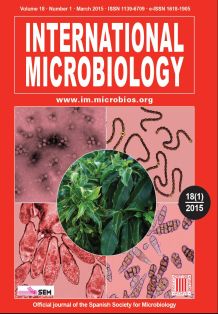Solar water disinfection (SODIS): Impact on hepatitis A virus and on a human Norovirus surrogate under natural solar conditions
Keywords:
Solar water disinfection (SODIS), water disinfection, hepatitis A virus (HAV), murine Norovirus (MNV-1)Abstract
This study evaluates the effectiveness of solar water disinfection (SODIS) in the reduction and inactivation of hepatitis A virus (HAV) and of the human Norovirus surrogate, murine Norovirus (MNV-1), under natural solar conditions. Experiments were performed in 330 ml polyethylene terephthalate (PET) bottles containing HAV or MNV-1 contaminated waters (103 PFU/ml) that were exposed to natural sunlight for 2 to 8 h. Parallel experiments under controlled temperature and/or in darkness conditions were also included. Samples were concentrated by electropositive charged filters and analysed by RT-real time PCR (RT-qPCR) and infectivity assays. Temperature reached in bottles throughout the exposure period ranged from 22 to 40ºC. After 8 h of solar exposure (cumulative UV dose of ~828 kJ/m2 and UV irradiance of ~20 kJ/l), the results showed significant (P < 0.05) reductions from 4.0 (±0.56) ×104 to 3.15 (±0.69) × 103 RNA copies/100 ml (92.1%, 1.1 log) for HAV and from 5.91 (±0.59) × 104 to 9.24 (±3.91) × 103 RNA copies/100 ml (84.4%, 0.81 log) for MNV-1. SODIS conditions induced a loss of infectivity between 33.4% and 83.4% after 4 to 8 h in HAV trials, and between 33.4% and 66.7% after 6 h to 8 h in MNV-1 trials. The results obtained indicated a greater importance of sunlight radiation over the temperature as the main factor for viral reduction. [Int Microbiol 2015; 18(1):41-49]
Keywords: Solar water disinfection (SODIS) · water disinfection · hepatitis A virus (HAV) · murine Norovirus (MNV-1)
Downloads
Issue
Section
License
Submission of a manuscript to International Microbiology implies: that the work described has not been published before, including publication in the World Wide Web (except in the form of an Abstract or as part of a published lecture, review, or thesis); that it is not under consideration for publication elsewhere; that all the coauthors have agreed to its publication. The corresponding author signs for and accepts responsability for releasing this material and will act on behalf of any and all coauthors regarding the editorial review and publication process.If an article is accepted for publication in International Microbiology, the authors (or other copyright holder) must transfer to the journal the right–not exclusive–to reproduce and distribute the article including reprints, translations, photographic reproductions, microform, electronic form (offline, online) or any other reproductions of similar nature. Nevertheless, all article in International Microbiology will be available on the Internet to any reader at no cost. The journal allows users to freely download, copy, print, distribute, search, and link to the full text of any article, provided the authorship and source of the published article is cited. The copyright owner's consent does not include copying for new works, or resale. In these cases, the specific written permission of International Microbiology must first be obtained.
Authors are requested to create a link to the published article on the journal's website. The link must be accompanied by the following text: "The original publication is available on LINK at <http://www.im.microbios.org>. Please use the appropiate URL for the article in LINK. Articles disseminated via LINK are indexed, abstracted, and referenced by many abstracting and information services, bibliographic networks, subscription agencies, library networks, and consortia.




